Trading Diary
April 14, 2006
The S&P 500 fell through support at 1295 after several days of declining volume signaled a lack of interest from buyers. The market then drifted sideways for the next two days, with little interest shown ahead of the long weekend. A test of intermediate support at 1270 is likely, but a rise above 1295 would signal an early recovery.
As we approach mid-April, the chances of a March quarter-end correction are now easing.
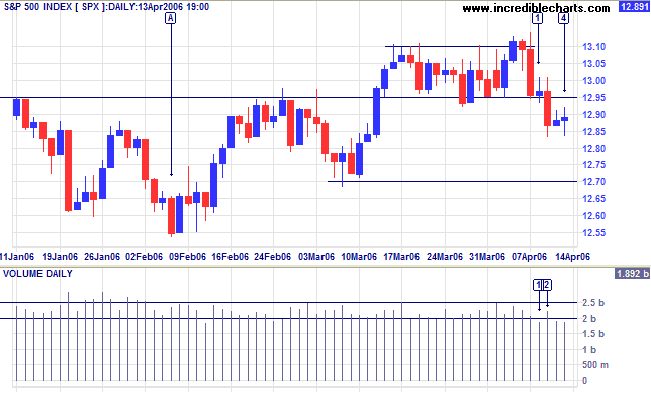
Long Term: The index is in a slow up-trend, with primary support at 1180.
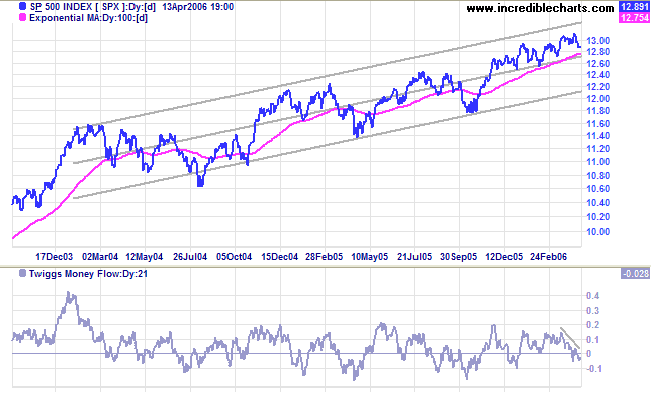
Medium Term: Twiggs Money Flow (21-day) is still bearish, having completed a peak below zero at [e], but the false break on the price chart at [2] is a bullish sign, confirmed if we see a close above 11250.
Long Term: The index is edging upwards, in a slow primary up-trend.
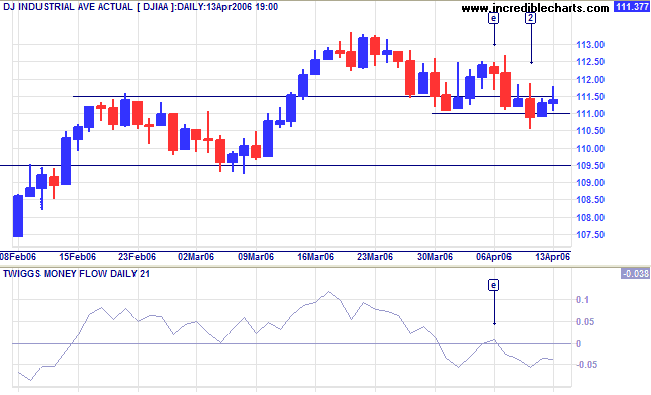
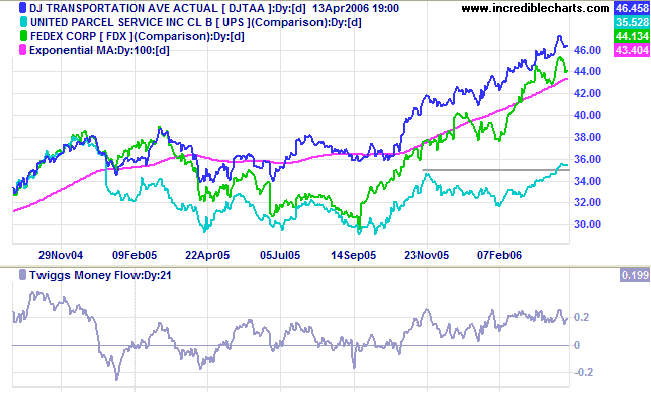
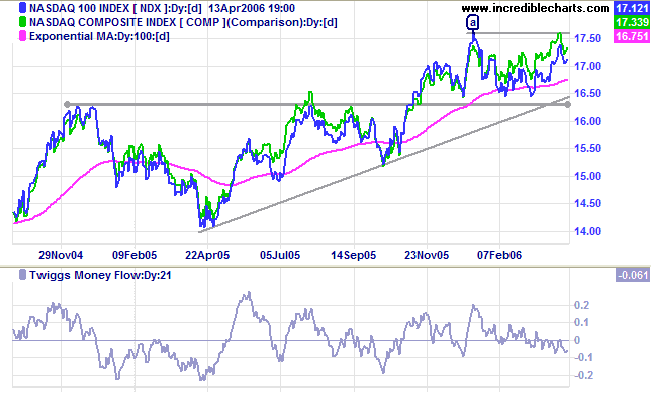
The 10-Year treasury yield climbed steeply to reach 5% for the first time in 4 years as rising yields in Japan and Europe attract investors away from the US.
Medium Term: The Fed is expected to continue hiking the short-term funds rate, causing long-term yields to rise further. The buoyant property market may slow but should not be significantly harmed by the historically low yields, while banks will benefit from wider margins caused by the steeper yield curve.
Long Term: The yield differential (10-year T-notes minus 13-week T-bills) is trending upwards, allowing the Fed more leeway to increase interest rates.
Wright's Model: Developed recently by Federal Reserve economist Jonathan H Wright, the model combines the yield differential and fed funds rate to predict the probability of recession. The probability looking ahead at the next four quarters is reasonably low at 23%.
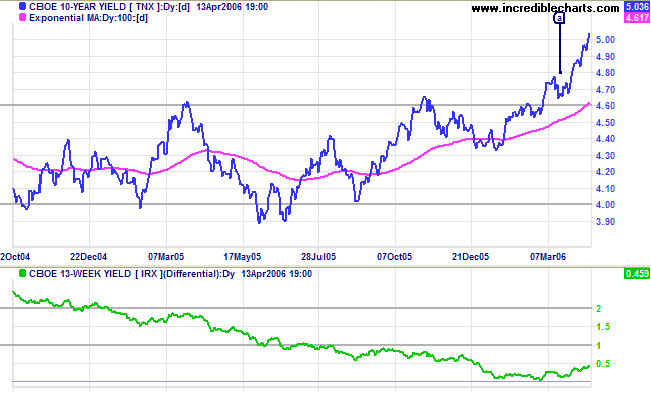
Spot gold is testing resistance at $600, closing the week at $596.30.
Medium Term: Narrow consolidation below $600 is a bullish sign, signaling continuation.
The Big Picture: Gold is in a primary up-trend. The previous high of $850 was experienced during the 1980 Iran/Iraq crisis at which time crude oil climbed to the dizzy height of $38/barrel. If we had an identical crisis today, adjusting 1980 prices for inflation, oil would be close to $100/barrel and gold trading above $2000!
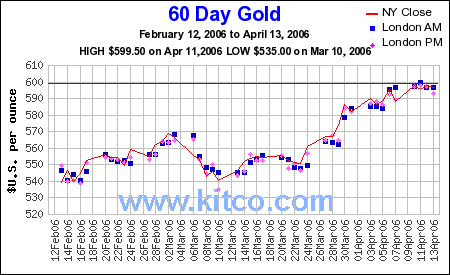
Light Crude is currently $69.50/barrel, testing resistance at $70. A rise above $70 would be a strong bull signal for oil (and gold) prices, while a drop below $55 would signal a primary trend reversal.
Nothing much has changed in the last week: the dollar continues to consolidate in a narrow range against major trading partners.
EUR/USD: The euro is in an intermediate up-trend and threatens a primary trend reversal (after the recent bullish breakout from a large triangle). A rise above the high of [D] would confirm that the euro has started a primary up-trend against the dollar, while a fall below [E] would signal continuation of the down-trend.
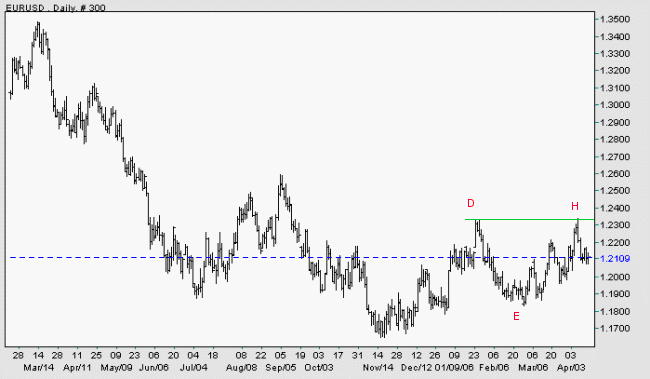
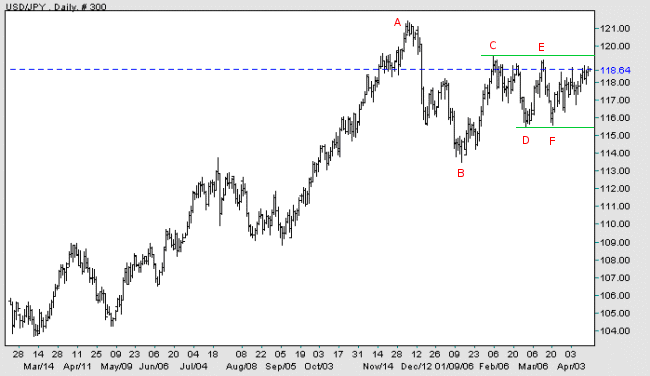
The FTSE 100 made a false breakout at [1], before increased volume signaled resistance and the index retreated below 6050 at [2]. However, a long tail at [3] signals buying support and possibly a further test of resistance; the short retracement being a bullish sign.
Medium Term: Twiggs Money Flow (21-day) continues to decline, warning of short-term distribution. A close back above 6050 would signal continuation of the up-trend, while an unlikely close below 5930 would signal a secondary correction.
The Big Picture: The FTSE 100 is in a strong primary up-trend.
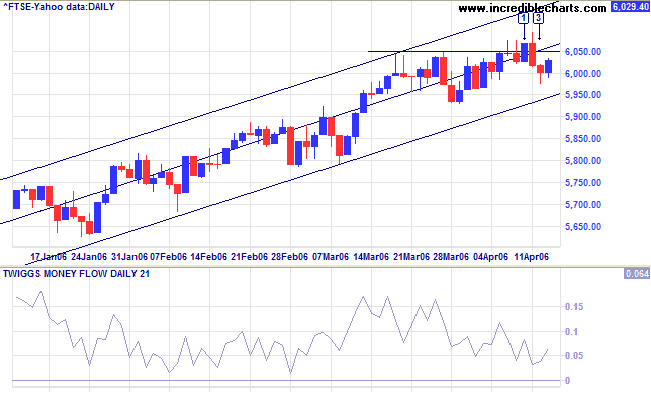
The Nikkei 225 retraced to test support, with weak closes at [1], [3] and [4] indicating a lack of commitment from sellers.
Medium Term: Twiggs Money Flow (21-day) is rising, signaling accumulation. If the current retracement respects support at 16700, expect a rally to test the target of 17900 (16700 + (16700 - 15500)).
The Big Picture: The index is in a strong primary up-trend.
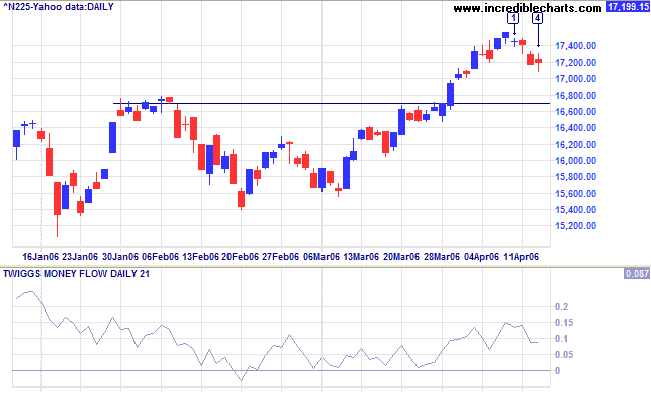
The All Ordinaries encountered resistance at 5200, an attempted rally on day [2] meeting with committed selling -- signaled by the high volume at [2] and [3]. The doji candle at [4], however, indicates indecision. A fall below the low of [4] would signal a correction, while a narrow consolidation between 5120 and 5200 would be a bullish (continuation) sign.
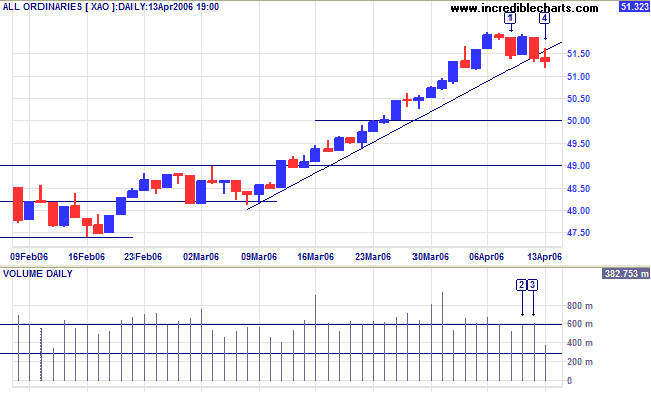
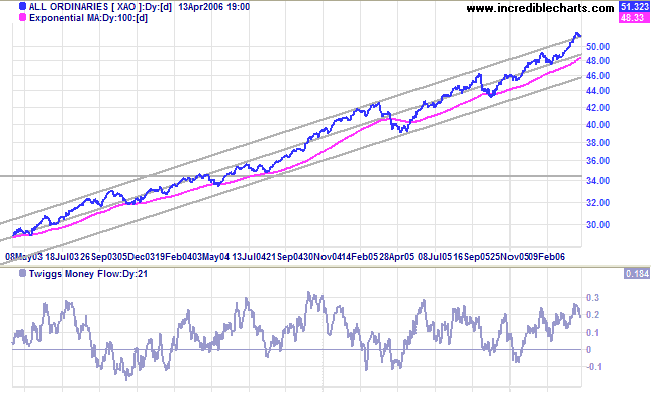
Regards,
People who delay action until all factors are favorable do nothing.
~ William Feather

Author: Colin Twiggs is a former investment banker with almost 40 years of experience in financial markets. He co-founded Incredible Charts and writes the popular Trading Diary and Patient Investor newsletters.
Using a top-down approach, Colin identifies key macro trends in the global economy before evaluating selected opportunities using a combination of fundamental and technical analysis.
Focusing on interest rates and financial market liquidity as primary drivers of the economic cycle, he warned of the 2008/2009 and 2020 bear markets well ahead of actual events.
He founded PVT Capital (AFSL No. 546090) in May 2023, which offers investment strategy and advice to wholesale clients.
